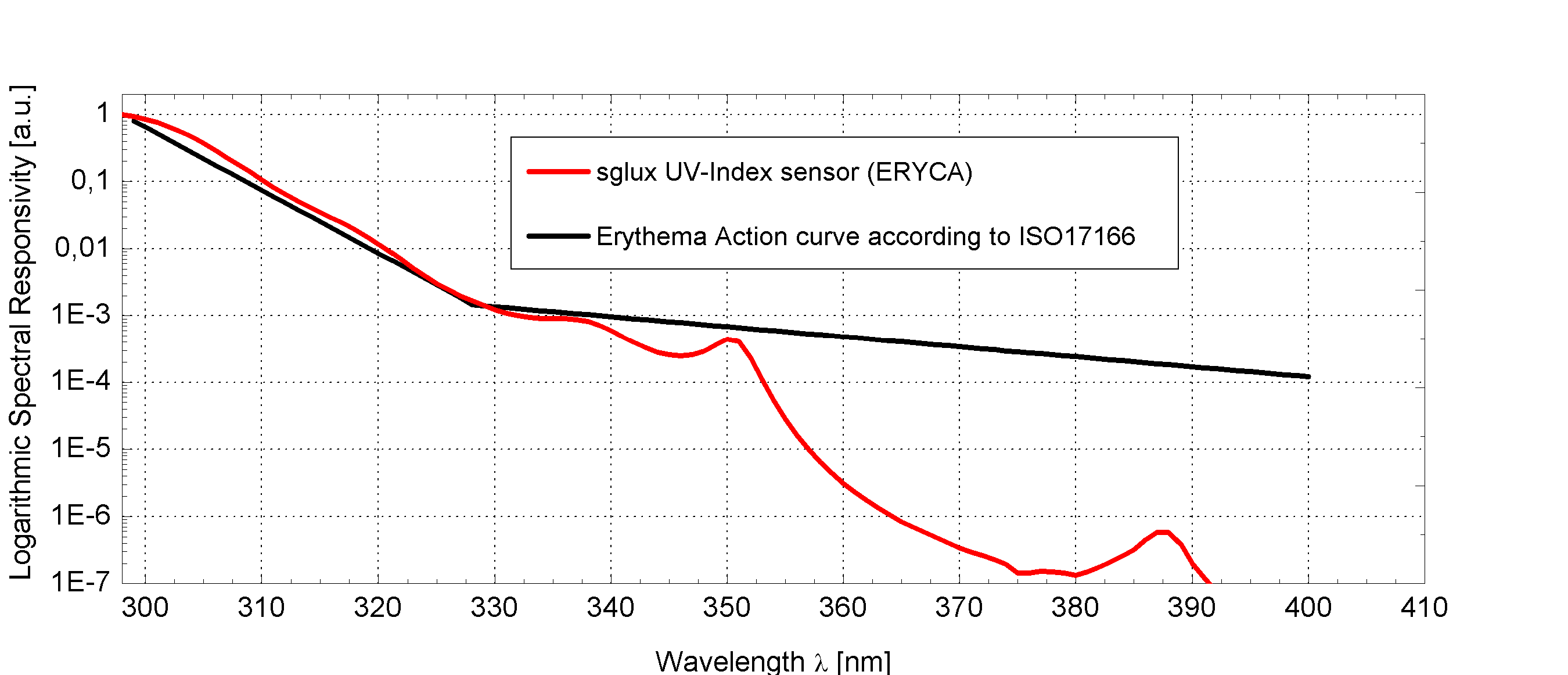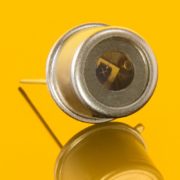UV-Index (Erythema)
for UV-Index measurement according to ISO 17166, less than 5 % measurement uncertainty = most precise currently available detector, with cosine correction available.
Showing all 2 results
-
SG01L-E5
UVI, chip active area = 1.00 mm², TO5 housingProduct Description- UV-Erythem (UVI)
- 1.00 mm2 detector area
- TO5 hermetically sealed metal housing, 1 isolated pin and 1 case pin
- for UV index measurement, measurement uncertainty less than 5%
- 1 UVI (2.5 µW/cm2) results approx. 2.5 nA
- this item needs an appropriate cosine correction to meet the ISO 17166 requirements
- SiC chip with PTB reported high radiation hardness
-
SG01L-E5D
UVI, chip active area = 1.00 mm², TO5 housing with cosine correctionProduct Description- UV-Erythem (UVI)
- 1.00 mm2 detector area
- TO5 hermetically sealed metal housing, 1 isolated pin and 1 case pin
- cosine corrected for UV index measurement acc. to ISO 17166, with measurement uncertainty less than 5%
- 1 UVI (2.5 µW/cm2) results approx. 1.3 nA
- SiC chip with PTB reported high radiation hardness




